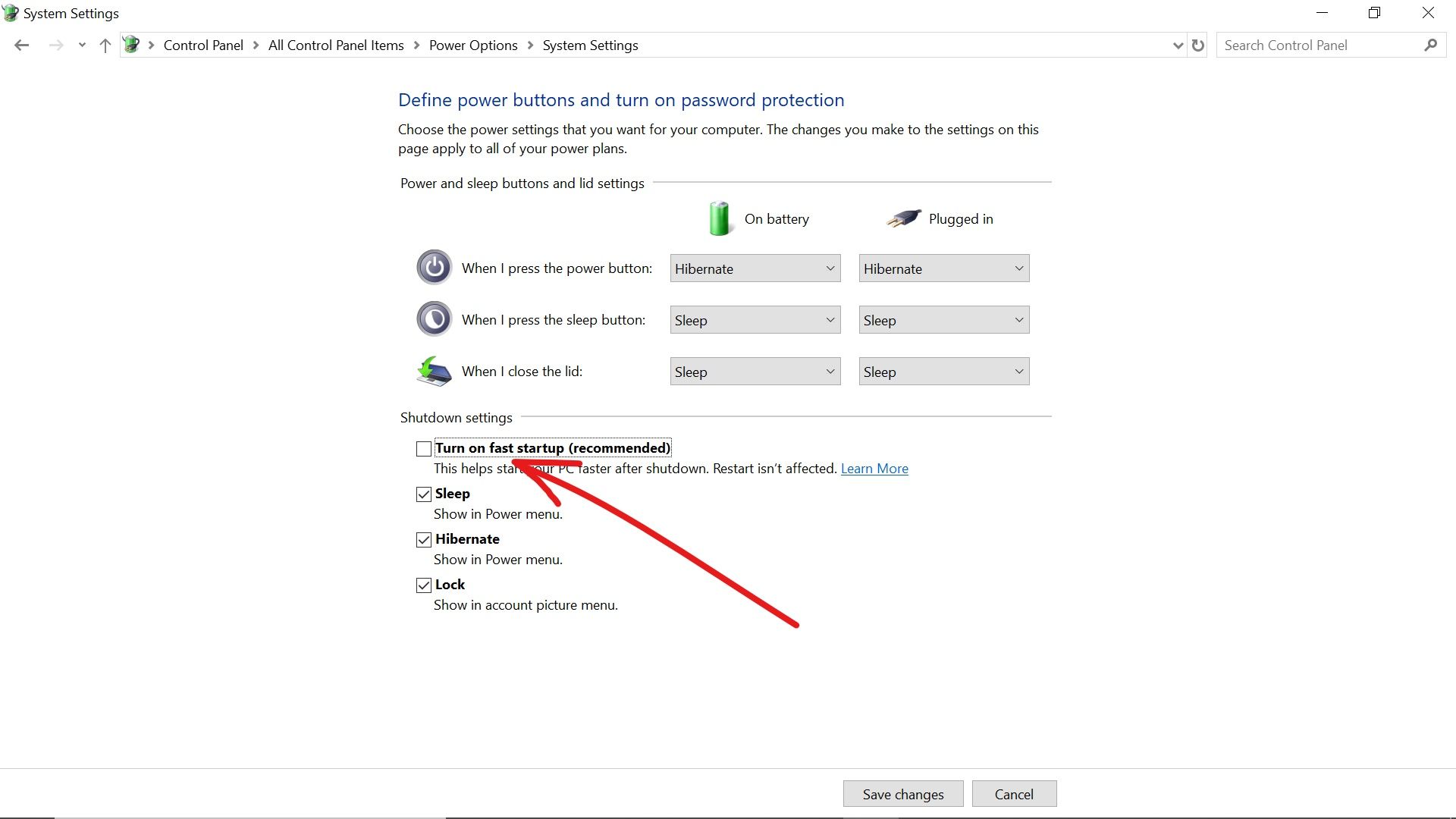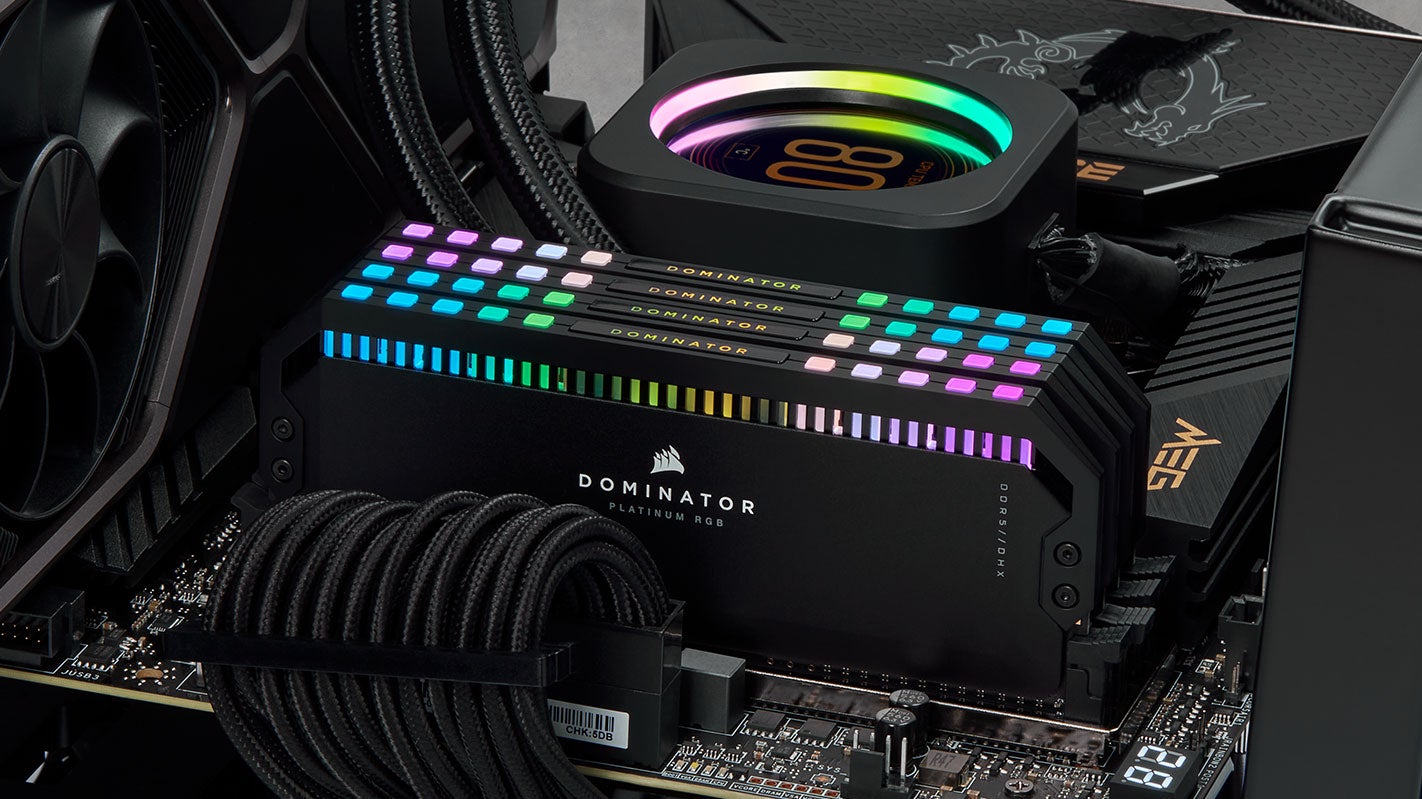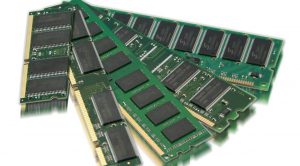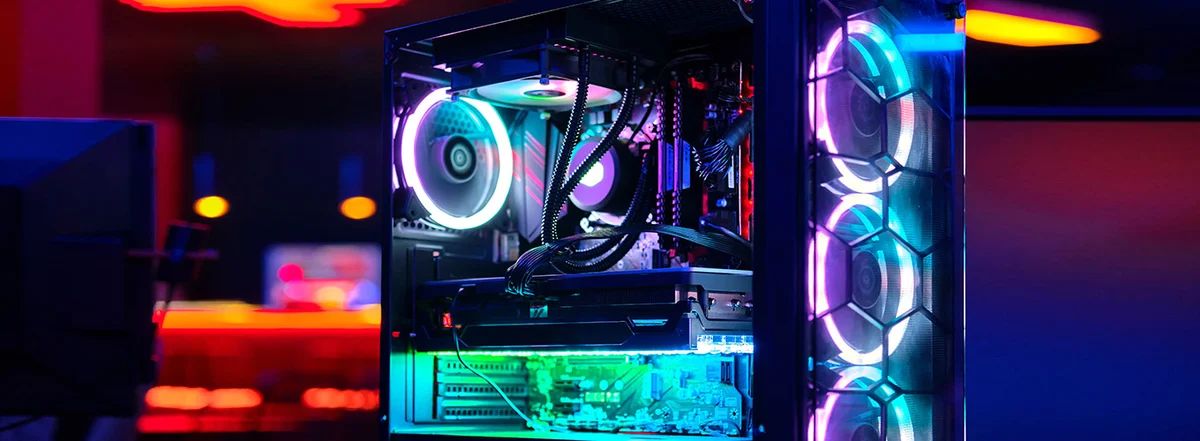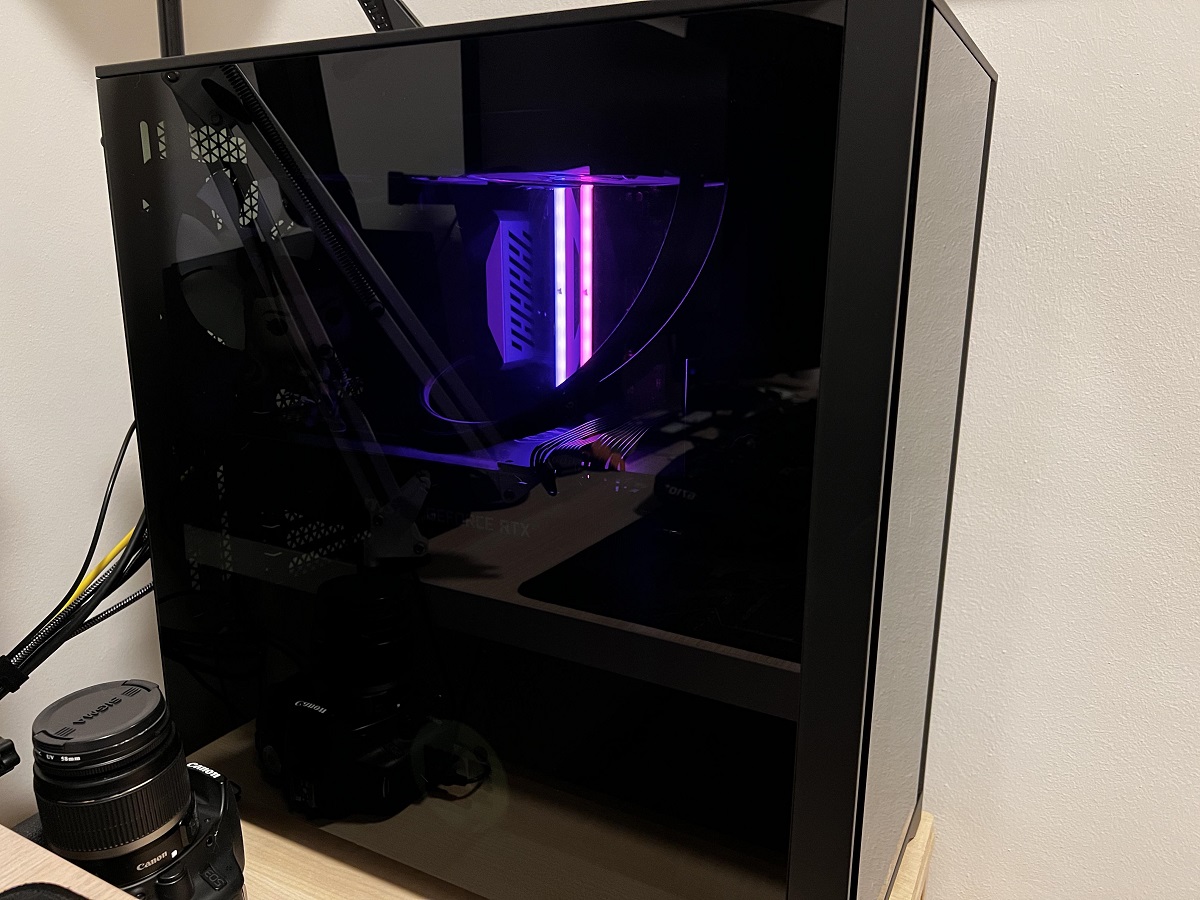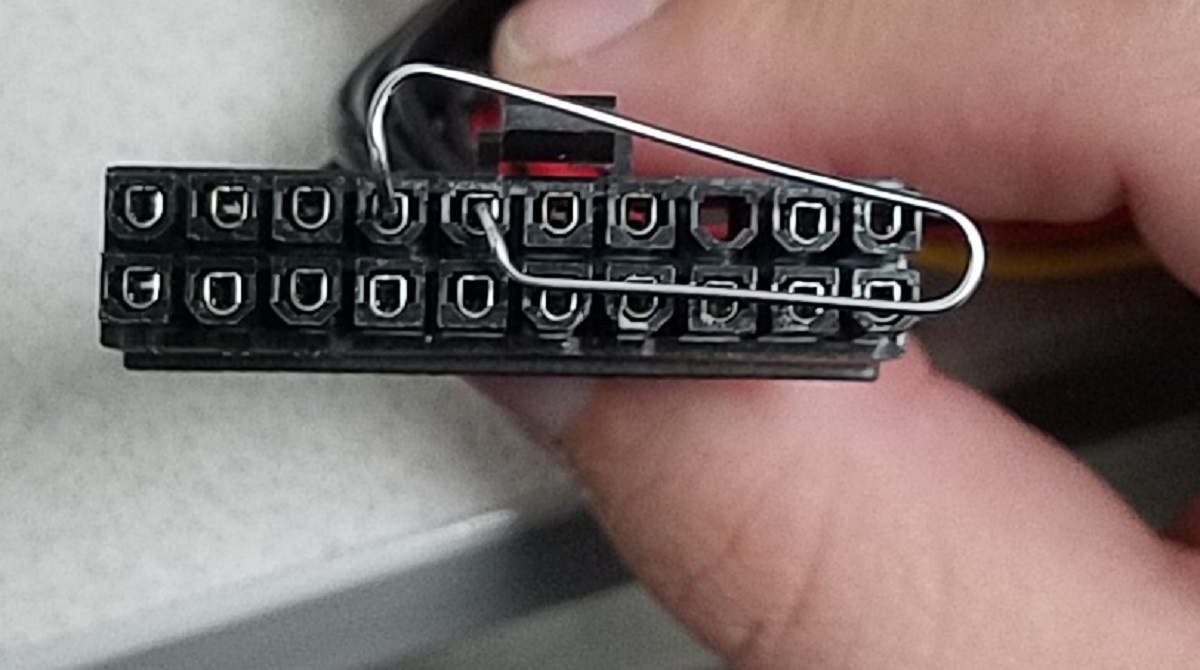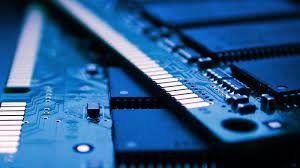Introduction
Having your PC randomly turn off can be not just annoying, but also a cause for concern. Whether you’re in the middle of an important project or simply browsing the web, sudden shutdowns can disrupt your workflow and potentially lead to data loss. Understanding the potential causes behind these abrupt shutdowns is crucial in order to effectively diagnose and address the issue.
There can be a multitude of reasons why your PC may be shutting down unexpectedly. From overheating issues to faulty hardware components, it’s important to explore all possible factors to determine the root cause of the problem. In this article, we will delve into some of the most common reasons for random PC shutdowns and provide steps to diagnose and fix the issue.
By identifying the cause of the problem, you’ll be better equipped to find a solution and prevent future shutdowns. It’s worth noting that while some issues can be resolved with basic troubleshooting, others may require professional assistance or hardware replacements. With that said, let’s explore the potential causes behind random PC shutdowns and how to address them effectively.
Potential Causes of Random PC Shutdowns
Random PC shutdowns can occur due to a variety of reasons. Understanding these potential causes is crucial in order to diagnose and resolve the issue effectively. Here are some common culprits behind unexpected shutdowns:
1. Overheating Issues: One of the most common causes of random PC shutdowns is overheating. When your computer’s components exceed their maximum temperature threshold, it triggers an automatic shutdown to prevent damage. This can happen if the cooling system is not functioning properly, or if there is a buildup of dust or debris obstructing the airflow within your PC.
2. Power Supply Issues: If your PC is experiencing sudden shutdowns, it’s worth checking your power supply unit (PSU). A faulty PSU can cause your computer to shut down unexpectedly, as it fails to deliver consistent and adequate power to your components.
3. Malware or Virus Infections: In some cases, random shutdowns may be caused by malware or virus infections. These malicious programs can disrupt your system’s stability and lead to unexpected shutdowns as part of their destructive behavior. Running a thorough scan with reputable antivirus software is essential to rule out this possibility.
4. Faulty Hardware Components: Failing hardware components, such as a malfunctioning power button, motherboard, or RAM module, can cause your PC to shut down unexpectedly. Conducting a hardware diagnostic test can help identify any faulty components that may be contributing to the issue.
5. Software or Driver Issues: Outdated or incompatible software, as well as buggy device drivers, can also lead to random PC shutdowns. It’s important to keep your operating system, applications, and drivers up to date to ensure compatibility and stability.
6. Insufficient RAM or Storage Space: If your PC is running low on memory or storage space, it can result in system instability and eventual shutdowns. Increasing your RAM or freeing up storage space can help alleviate this issue.
7. Electrical Problems: Electrical issues, such as power surges or fluctuations, can cause your PC to shut down unexpectedly. Using a surge protector or uninterruptible power supply (UPS) can help protect your computer from such power-related issues.
By understanding the potential causes of random PC shutdowns, you can begin the troubleshooting process with a more informed approach. In the following sections, we will explore how to diagnose and fix these issues to restore stability to your computer system.
Overheating Issues
Overheating is a common culprit behind random PC shutdowns. When the internal components of your computer exceed their maximum temperature threshold, the system will automatically shut down to prevent permanent damage. Here are some potential causes and solutions for overheating issues:
1. Dust and debris: Over time, dust and debris can accumulate inside your computer, especially in fans and heat sinks. This accumulation restricts airflow and prevents proper cooling, leading to overheating. Regularly cleaning the internal components can help mitigate this issue. Use compressed air or a soft brush to gently remove dust from the fans, heat sinks, and vents. Ensure that your computer is powered off and disconnected from the power source before cleaning.
2. Faulty cooling system: If your fans are not functioning properly or if the heat sink is not making proper contact with the processor, it can lead to inadequate cooling. Check if the fans are spinning properly and listen for any unusual noises. If necessary, replace faulty fans or heat sinks to restore proper cooling.
3. Overclocking: Overclocking refers to increasing the clock speed of your processor or graphics card beyond their factory settings. While this can boost performance, it also generates more heat. If you’ve overclocked your system and are experiencing random shutdowns, consider reverting to the default clock speeds to reduce heat generation.
4. Inadequate ventilation: Ensure that your computer is placed in a well-ventilated area. Blocking the vents or placing your PC in an enclosed space can lead to poor air circulation, contributing to overheating. Position your computer in a location where there is ample space for airflow and consider using a laptop cooling pad to improve ventilation for laptops.
5. Inadequate thermal paste: Thermal paste is a compound that is applied between the heat sink and the processor to enhance thermal conductivity. If the thermal paste is old or not applied correctly, it can result in poor heat transfer, leading to overheating. Consider reapplying thermal paste to ensure optimal heat dissipation.
Regularly monitoring your computer’s temperature can help you detect and address overheating issues before they cause random shutdowns. Various software applications are available that can monitor your CPU and GPU temperatures in real-time. If you notice that your temperatures are consistently high, it is a good indication that overheating is the root cause of your shutdowns.
By addressing overheating issues through proper cleaning, maintenance, and ensuring adequate cooling, you can prevent random shutdowns and extend the lifespan of your computer components.
Power Supply Issues
Power supply issues can often be a cause of random PC shutdowns. A faulty or inadequate power supply unit (PSU) can result in inconsistent power delivery to your computer’s components, causing sudden shutdowns. Here are some potential causes and solutions for power supply issues:
1. Faulty PSU: If your PSU is defective or failing, it can lead to random shutdowns. Check if there are any unusual sounds coming from the PSU, such as clicking or buzzing. Also, inspect the PSU for any visible signs of damage, such as bulging capacitors. If you suspect that your PSU is faulty, consider replacing it with a high-quality, compatible PSU to ensure stable power supply.
2. Inadequate power capacity: It’s essential to ensure that your PSU has sufficient power capacity to meet the demands of your computer’s components. Upgrading your graphics card, adding more drives, or installing power-hungry peripherals without upgrading your PSU can lead to insufficient power supply and random shutdowns. Check the power requirements of your components and ensure that your PSU meets or exceeds those requirements.
3. Power cable and connections: Sometimes, a loose or faulty power cable connection can cause intermittent power supply issues, leading to random shutdowns. Ensure that all power cables are securely plugged into their respective ports and that there are no bent pins or visible damage. Consider replacing the power cable if it appears damaged or worn out.
4. Voltage fluctuations: Fluctuations in the power supply from the electrical outlet can also cause random PC shutdowns. To protect your computer from voltage spikes and dips, consider using a surge protector or an uninterruptible power supply (UPS). These devices help regulate and stabilize the power supply, minimizing the risk of sudden shutdowns due to power fluctuations.
If you suspect that power supply issues are causing your PC to shut down randomly, it may be worth seeking professional assistance. A computer technician can perform diagnostic tests to identify the exact problem with the PSU and recommend the appropriate course of action.
By addressing power supply issues, whether by replacing a faulty PSU or ensuring adequate power capacity, you can minimize the risk of random PC shutdowns and maintain a stable and reliable computer system.
Malware or Virus Infections
Malware and virus infections can disrupt the stability of your computer system and cause random shutdowns. These malicious programs can interfere with system processes, overload system resources, and execute destructive actions that result in unexpected shutdowns. Here are some potential causes and solutions for dealing with malware or virus infections:
1. Run a malware scan: Use reputable antivirus software to thoroughly scan your computer for malware and viruses. Make sure your antivirus software is up to date with the latest virus definitions. Perform a full system scan to detect and remove any malicious programs that may be causing the random shutdowns.
2. Enable real-time protection: Enable the real-time protection feature of your antivirus software. This allows the software to continuously monitor your system and block any malware or virus activity in real-time, reducing the chances of random shutdowns due to malicious programs.
3. Update your operating system and software: Outdated software, including your operating system, can have vulnerabilities that malware can exploit. Regularly update your operating system, antivirus software, and other applications to ensure the latest security patches are installed.
4. Exercise caution online: Be mindful of the websites you visit and the files you download. Avoid clicking on suspicious links or opening email attachments from unknown sources. These can often be sources of malware infections that can lead to random shutdowns.
5. Use a reliable firewall: A firewall acts as a barrier between your computer and the internet, blocking unauthorized access and protecting against malware. Ensure your firewall is enabled and properly configured to prevent malware from infiltrating your system.
If your computer is already infected with malware and experiencing random shutdowns, it’s important to take immediate action. Start by running a thorough malware scan and removing any detected threats. If you’re unable to resolve the issue on your own, consider seeking assistance from a professional computer technician who can perform advanced malware removal techniques.
Preventing future malware infections is equally important. Adopting safe online practices, keeping your software updated, and using reliable security measures can help protect your computer from malware and reduce the risk of random shutdowns.
Faulty Hardware Components
Random PC shutdowns can also occur as a result of faulty hardware components. When critical components of your computer experience malfunctions, such as the power button, motherboard, or RAM module, it can lead to sudden system shutdowns. Here are some potential causes and solutions for dealing with faulty hardware components:
1. Perform a hardware diagnostic test: Running a hardware diagnostic test can help identify if any components are causing the random shutdowns. There are several software programs available, such as Memtest86 for RAM testing or CrystalDiskInfo for hard drive testing, that can help diagnose hardware issues. Follow the instructions provided by the diagnostic software to identify and replace any faulty components.
2. Check the power button: A faulty power button can cause intermittent shutdowns. If you notice that your PC shuts down when the power button is pressed, it may indicate a problem with the button itself. Carefully inspect the power button for any visible damage or loose connections. Consider replacing the power button if necessary.
3. Inspect the motherboard: The motherboard is the central hub that connects all hardware components in your computer. Loose connections, damaged capacitors, or other issues with the motherboard can lead to system instability and random shutdowns. Visually inspect the motherboard for any signs of damage, such as bulging or leaking capacitors. If you suspect a problem with the motherboard, it may require professional repair or replacement.
4. Ensure proper RAM seating: Improperly seated RAM modules can cause random shutdowns. Remove and reseat the RAM modules, ensuring that they are securely and correctly inserted into the slots. Additionally, try testing each RAM module individually to identify if a specific module is causing the issue. Replace any faulty RAM modules that are causing instability.
5. Check other hardware components: While the power button, motherboard, and RAM are common culprits of random shutdowns, other hardware components like the graphics card, hard drive, or even the CPU can also cause similar issues. If none of the above solutions address the problem, consider seeking professional assistance to diagnose and repair or replace the faulty hardware component.
It’s important to note that diagnosing and replacing faulty hardware components can sometimes be challenging and may require technical expertise. If you’re unsure or uncomfortable performing these tasks yourself, it’s recommended to consult with a qualified computer technician who can accurately diagnose and resolve the hardware issue.
By quickly identifying and addressing faulty hardware components, you can restore stability to your computer system and prevent further random shutdowns.
Software or Driver Issues
Software or driver issues can contribute to random PC shutdowns. Outdated or incompatible software, as well as faulty or outdated drivers, can cause instability in your computer system, leading to unexpected shutdowns. Here are some common causes and solutions for dealing with software or driver issues:
1. Update your operating system: An outdated operating system can have compatibility issues with newer software and drivers, resulting in system instability. Regularly check for updates and install the latest version of your operating system to ensure optimal performance and stability.
2. Update your software: Outdated software can contain bugs or compatibility issues that may cause random shutdowns. Keep your applications, especially resource-intensive ones like video editing software or games, up to date. Check for updates regularly, or enable automatic updates if available.
3. Update your drivers: Faulty or outdated device drivers can result in system instability and random shutdowns. Keep your drivers up to date by visiting the manufacturer’s website or using reliable driver update software. Pay particular attention to graphics card drivers, as outdated or incompatible drivers can cause system crashes.
4. Uninstall conflicting software: Occasionally, software conflicts can lead to system instability and shutdowns. If you installed a new application prior to experiencing random shutdowns, try uninstalling it to see if the problem resolves. Use the “Add or Remove Programs” feature in your operating system to uninstall software that may be causing conflicts.
5. Perform a clean boot: A clean boot is a troubleshooting technique that helps identify software conflicts by starting your computer with a minimal set of drivers and startup programs. By eliminating unnecessary background processes, you can determine if a specific software or driver is causing the random shutdowns. If the issue is resolved in a clean boot, gradually re-enable the disabled programs and services until you identify the culprit.
6. Reinstall problematic software: If a specific software application is causing frequent shutdowns, uninstall the software and then reinstall it. Reinstalling the software can resolve any corrupt or missing files that may be contributing to the instability.
Addressing software or driver-related issues can often resolve random PC shutdowns. By keeping your operating system, software, and drivers up to date, and troubleshooting any conflicts or compatibility issues, you can enjoy a stable and reliable computer system.
Insufficient RAM or Storage Space
Insufficient RAM or storage space can lead to random PC shutdowns. When your computer runs out of available resources, it can become overwhelmed and struggle to perform essential tasks, resulting in system instability and sudden shutdowns. Here are some potential causes and solutions for dealing with insufficient RAM or storage space:
1. Increase RAM: If your computer frequently runs out of memory, consider upgrading your RAM. Insufficient RAM can cause system slowdowns and crashes. Check your computer’s specifications and determine the maximum amount of RAM it can support. Purchase compatible RAM modules and install them according to the manufacturer’s instructions.
2. Manage startup programs: Startup programs can consume a significant amount of RAM, especially if there are too many of them. Disable unnecessary startup programs to free up memory. You can do this by accessing the “Startup” section in the Task Manager and disabling programs that you don’t need to launch automatically.
3. Optimize virtual memory: Virtual memory allows your computer to use a portion of your hard drive as temporary memory when the physical RAM is not sufficient. Adjusting the virtual memory settings can help prevent random shutdowns. Access the virtual memory settings in the Control Panel or System Properties and ensure it is set to “Automatically manage paging file size for all drives.”
4. Clean up disk space: Insufficient storage space on your hard drive can also lead to system instability and random shutdowns. Remove unnecessary files and applications to free up disk space. Use the Disk Cleanup tool or a third-party disk cleaning software to identify and delete unnecessary files and temporary data.
5. Upgrade storage drive: If your hard drive is running out of space, consider upgrading to a larger capacity hard drive or a solid-state drive (SSD). SSDs are faster and more reliable than traditional hard drives, providing improved performance and stability.
6. Optimize storage usage: Efficiently organize your files and folders to maximize available storage space. Delete any redundant or old files, and consider moving large files to external storage devices or cloud-based storage solutions to free up space on your hard drive.
By ensuring you have sufficient RAM and storage space, and regularly managing and optimizing these resources, you can minimize the risk of random PC shutdowns and maintain a stable and efficient computer system.
Electrical Problems
Electrical problems can be another potential cause of random PC shutdowns. Issues such as power surges, fluctuations, or inadequate grounding can disrupt the stable power supply to your computer, leading to sudden shutdowns. Here are some common electrical problems and their solutions:
1. Use a surge protector: Power surges can occur when there is a sudden increase in electrical voltage. These surges can potentially damage your computer’s components and cause random shutdowns. Use a surge protector to protect your PC from voltage spikes. Ensure that the surge protector is rated to handle the power requirements of your computer and other peripherals.
2. Uninterruptible Power Supply (UPS): An uninterruptible power supply provides backup power to your computer in case of power outages and also protects against voltage fluctuations. It acts as a buffer, ensuring that your computer receives a stable power supply during power disruptions. Consider using a UPS to prevent sudden shutdowns caused by power fluctuations or outages.
3. Electrical grounding: Inadequate grounding can lead to electrical problems, including random PC shutdowns. Ensure that your computer and other electronics are properly grounded by using grounded outlets. If you suspect grounding issues, it is recommended to consult an electrician to assess and rectify any electrical grounding problems in your home or office.
4. Power outlet issues: Faulty power outlets, loose connections, or inadequate wiring can cause power fluctuations or interruptions that result in random PC shutdowns. Have a qualified electrician inspect your power outlets and wiring to ensure they meet safety standards and are in good working condition.
5. Preventive measures: Aside from using surge protectors and UPS devices, it’s also advisable to unplug your computer during severe weather conditions or when it’s not in use for an extended period. This helps protect your computer from potential electrical damage during storms or power surges.
Electrical problems can be complex and potentially dangerous. If you suspect that electrical issues are causing random PC shutdowns, it’s important to seek professional assistance from a licensed electrician to assess and rectify any underlying electrical problems.
By addressing electrical issues and taking preventive measures to safeguard your computer from power surges or fluctuations, you can minimize the risk of random shutdowns and protect your computer’s components from potential damage.
How to Diagnose and Fix Random PC Shutdowns
Diagnosing and fixing random PC shutdowns can be a frustrating process, but by following a systematic approach, you can identify the underlying causes and resolve the issue. Here are some steps to help you diagnose and fix random PC shutdowns:
- Monitor and manage PC temperature: Overheating is a common cause of random shutdowns. Install temperature-monitoring software to keep track of your CPU and GPU temperatures. If the temperatures consistently reach high levels, clean out any dust from the fans and heat sinks, ensure proper airflow, and consider installing additional cooling fans or upgrading your cooling system.
- Check the Power Supply Unit (PSU): A faulty or inadequate PSU can cause random shutdowns. Check the connections to ensure they are secure, visually inspect the PSU for any signs of damage, and consider testing with a different power supply if available. If the PSU is suspected to be faulty, replace it with a high-quality, compatible unit.
- Scan for malware or viruses: Perform a thorough scan using reputable antivirus software to check for any malware or virus infections that may be causing the random shutdowns. Ensure that your antivirus software is up to date and perform regular scans to prevent future infections.
- Test hardware components: Run diagnostic tests to check for faulty hardware components. Use specialized software or consult a professional technician to test your RAM, hard drive, graphics card, and other critical components. Replace any faulty components that are identified during the testing process.
- Update software and drivers: Outdated or incompatible software and drivers can lead to random shutdowns. Update your operating system, applications, and drivers to ensure compatibility and stability. Regularly check for updates and install the latest versions.
- Optimize RAM and storage space: Insufficient RAM or storage space can cause system instability. Upgrade your RAM if necessary and free up storage space by removing unnecessary files and applications. Adjust virtual memory settings for optimal performance.
- Address electrical problems: Check for power surges, fluctuations, and grounding issues. Use surge protectors or uninterruptible power supplies to protect your computer from electrical problems. Consult a professional electrician to address any underlying electrical issues in your home or office.
Diagnosing and fixing random PC shutdowns may require a combination of these steps, depending on the specific cause. In some cases, it may be necessary to seek professional assistance, especially when dealing with hardware diagnostics or electrical problems beyond your expertise.
By following these steps and ensuring the health and stability of your hardware and software, you can identify and resolve the underlying causes of random PC shutdowns, allowing for a more reliable and efficient computing experience.
Steps to Monitor and Manage PC Temperature
Monitoring and managing your PC’s temperature is crucial for preventing overheating and random shutdowns. It allows you to identify potential issues that may be causing the system to become too hot and take appropriate measures to mitigate the problem. Here are some steps to help you monitor and manage your PC’s temperature effectively:
- Install temperature-monitoring software: There are various temperature-monitoring tools available that allow you to monitor your CPU and GPU temperatures in real-time. These software applications provide detailed information on the current temperature and can often display temperature trends over time.
- Check temperature thresholds: Every computer component has a maximum temperature threshold that should not be exceeded. Refer to the documentation or manufacturer’s website to determine the safe operating temperatures for your CPU, GPU, and other critical components.
- Clean out dust and debris: Dust and debris accumulation can obstruct airflow, leading to poor cooling and increased temperatures. Regularly clean out dust from fans, heat sinks, and vents using compressed air or a soft brush. Ensure that your computer is powered off and disconnected from the power source before cleaning.
- Ensure proper airflow: Ensure that your computer has adequate airflow by positioning it in a well-ventilated area. Avoid blocking the vents, and consider using a cool, elevated laptop stand or an additional cooling fan to improve air circulation.
- Invest in additional cooling: If you frequently experience high temperatures, especially during demanding tasks, consider investing in additional cooling methods. This can include installing additional case fans, upgrading your CPU or GPU cooler, or using liquid cooling systems for more efficient heat dissipation.
- Manage workload and resource usage: Resource-intensive tasks can generate more heat, putting stress on your hardware components. To prevent excessive temperature buildup, avoid running multiple demanding applications simultaneously and monitor the resource usage of your computer. Close unnecessary programs and processes that may be causing an unnecessary strain on your system.
- Check thermal paste: Thermal paste is used to improve the thermal conductivity between the CPU and the heat sink. Over time, the thermal paste may degrade or dry out. Consider checking and replacing the thermal paste if you notice consistently high temperatures even after proper cleaning and airflow optimization.
By consistently monitoring your PC’s temperature and taking appropriate actions to manage it, you can prevent overheating issues and reduce the risk of random shutdowns. Maintaining optimal temperature levels ensures the longevity and performance of your components, allowing for a smoother and more reliable computing experience.
Checking the Power Supply Unit (PSU)
The power supply unit (PSU) is a critical component of your computer system, responsible for supplying power to all the hardware components. If you are experiencing random PC shutdowns, one potential cause could be a faulty or inadequate PSU. Here are some steps to help you check the PSU and determine if it is the culprit behind the shutdowns:
- Visually inspect the PSU: Start by inspecting the power supply unit visually. Look for any signs of physical damage, such as bulging or burst capacitors, frayed cables, or burn marks. These can indicate a faulty PSU that needs to be replaced.
- Ensure proper connections: Check all connections between the PSU and the various hardware components in your computer system. Make sure that the connections are secure and properly seated. Loose or faulty connections can cause intermittent power supply issues, leading to random shutdowns.
- Verify power capacity: Ensure that the power supply unit has sufficient capacity to handle the power requirements of your computer components. Check the wattage rating of your PSU and compare it to the overall power consumption of your hardware. If the PSU is underpowered for your system, it may be causing instability and unexpected shutdowns.
- Test the PSU voltage: Use a multimeter to test the voltages outputted by the PSU. Consult the documentation or manufacturer’s website for the correct voltage values for each rail of the PSU. If the voltages stray significantly from the specified values, it may indicate a faulty PSU that needs to be replaced.
- Swap with a known working PSU: If you have access to a known working PSU, consider swapping it with your current PSU temporarily. Connect the replacement PSU to your system and observe if the random shutdowns persist. If the issue resolves with the replacement PSU, it confirms that the original PSU is faulty and should be replaced.
- Consult a professional: If you’re unsure about checking the PSU or lack the necessary tools, it is recommended to seek assistance from a professional technician. They can perform advanced diagnostic tests using specialized equipment to accurately determine the health of your PSU.
The PSU plays a vital role in the stability and performance of your computer system. If you suspect that your PSU is causing random shutdowns, it’s crucial to address the issue promptly. Faulty PSUs can pose a risk to the other components of your computer, and it is recommended to replace them with a high-quality PSU to ensure stable power supply and prevent further issues.
Scanning for Malware or Viruses
Malware or virus infections can be a common cause of random PC shutdowns. These malicious programs can disrupt system processes, overload resources, and trigger unexpected shutdowns. Therefore, it is important to regularly scan your computer for malware and viruses to ensure the security and stability of your system. Here are some steps to effectively scan for and remove malware or viruses:
- Install reputable antivirus software: Choose a reliable and up-to-date antivirus software from a reputable vendor. Ensure that the software provides robust real-time protection and frequent updates to detect the latest threats.
- Update your antivirus software: To stay protected against the latest malware and viruses, regularly update your antivirus software with the latest virus definitions provided by the vendor. This ensures that your antivirus solution can identify and remove the most recent threats.
- Perform a full system scan: Initiate a full system scan using your antivirus software. This comprehensive scan will examine all files and folders on your computer, searching for any known malware or viruses. This process may take some time, depending on the size of your hard drive and the amount of data stored on it.
- Isolate and quarantine infected files: If the antivirus software detects any infected files during the scan, it will isolate and quarantine them to prevent further damage. Follow the prompts provided by the antivirus software to handle the infected files appropriately.
- Remove or repair infected files: Once the infected files are isolated, you can choose to either remove or repair them. In most cases, it is recommended to remove infected files completely to prevent any possibility of reactivation or further infection. However, for critical system files, the antivirus software may offer repair options to restore their functionality without compromising system stability.
- Scan downloads and email attachments: Enable real-time scanning or manual scans for downloaded files and email attachments. This ensures that any potentially infected files are detected and dealt with before they can cause harm to your system.
- Enable automatic scans: Configure your antivirus software to perform automatic scans on a regular basis. This ensures that your computer remains protected even if you forget to initiate manual scans. Schedule scans during idle times when you are not actively using your computer.
- Stay vigilant online: Practicing safe and responsible online behavior can significantly reduce the risk of malware or virus infections. Avoid visiting suspicious websites, clicking on suspicious links, or downloading files from untrustworthy sources. Exercise caution when opening email attachments or clicking on email links, particularly if they come from unknown or suspicious senders.
Regularly scanning your computer for malware or viruses is essential to maintain a secure and stable system. By following these steps and adopting safe browsing habits, you can minimize the risk of random PC shutdowns caused by malware or virus infections, ensuring a safer computing experience.
Testing Hardware Components
Testing hardware components is an important step in diagnosing and resolving random PC shutdowns. Faulty hardware components, such as RAM, hard drives, graphics cards, or motherboards, can cause instability and lead to unexpected shutdowns. Here are some steps to effectively test your hardware components:
- Perform a RAM test: RAM issues can contribute to random shutdowns. Use specialized software, such as Memtest86, to perform a thorough memory test. This test helps identify faulty RAM modules or other memory-related issues. Consider testing each RAM module individually to pinpoint the faulty module.
- Check the hard drive health: A failing or corrupt hard drive can cause system instability and unexpected shutdowns. Use software utilities like CrystalDiskInfo to check the health status of your hard drive. Look out for any warning signs like bad sectors, high temperatures, or impending failures.
- Test the graphics card: Graphics card issues can also lead to random shutdowns. Stress test your graphics card using programs like FurMark to check for stability. Monitor the temperatures and look for artifacts or crashes that may indicate a faulty graphics card.
- Monitor CPU temperatures: Overheating of the CPU can cause shutdowns. Use temperature-monitoring software to keep an eye on your CPU temperatures during different tasks. If the temperatures consistently reach high levels, consider cleaning the CPU cooler and applying fresh thermal paste for better heat transfer.
- Inspect the motherboard: Visually inspect the motherboard for any damaged or leaking capacitors. These can cause power delivery issues and lead to unexpected shutdowns. Additionally, check for loose connections or damaged traces on the motherboard and ensure everything is properly seated.
- Test the power supply unit (PSU): Use a multimeter to measure the voltage outputs of the PSU to determine if it is providing stable power. Alternatively, swapping the PSU with a known working one can help identify if the PSU is causing the random shutdowns.
- Update device drivers: Outdated or incompatible device drivers can cause system instability and shutdowns. Ensure that all drivers, including those for the motherboard, graphics card, and other peripherals, are up to date. Update them from the manufacturer’s official website or use driver update software.
If you are uncertain about conducting hardware tests or lack the necessary technical knowledge, it is advisable to seek assistance from a professional technician. They can perform advanced diagnostics and recommend appropriate solutions based on the test results. Remember to keep proper backups of your data before attempting any hardware testing or repair.
By testing your hardware components systematically, you can identify any faulty components that may be causing the random shutdowns. Replacement or repair of the faulty hardware can restore stability to your computer system and prevent further unexpected shutdowns.
Updating Software and Drivers
Outdated or incompatible software and drivers can contribute to system instability, resulting in random PC shutdowns. Keeping your software and drivers up to date ensures compatibility, improves system performance, and addresses known issues. Here are some steps to effectively update your software and drivers:
- Operating system updates: Regularly check for updates for your operating system. Enable automatic updates if available or manually check for updates through the settings or control panel. Installing the latest updates ensures that your operating system has the latest security patches, bug fixes, and performance improvements.
- Application updates: Update your applications to the latest versions. Many applications provide built-in update mechanisms or can be updated through their respective websites. Newer versions often include feature enhancements, bug fixes, and stability improvements, reducing the likelihood of random PC shutdowns.
- Driver updates: Outdated or incompatible drivers can cause system instability. Identify the devices in your system and visit the manufacturer’s website for each device to check for driver updates. Graphics cards, network adapters, and audio devices are some components that may require driver updates. Consider using driver update software to automate the process and ensure you have the latest compatible drivers installed.
- BIOS updates: The BIOS (Basic Input/Output System) firmware on your motherboard controls the communication between your hardware components and the operating system. Check the motherboard manufacturer’s website for BIOS updates specific to your motherboard model. However, exercise caution when updating the BIOS, as an incorrect update can cause irreparable damage to your system.
- Verify compatibility: Before updating any software or drivers, ensure compatibility with your system specifications. Check the release notes or documentation provided by the software or hardware manufacturers to verify that your system meets the requirements for the update. Installing incompatible updates can lead to further instability or compatibility issues.
- Restart your system: After updating software and drivers, it is crucial to restart your computer. Restarting ensures that the updates take effect and helps clear out any residual issues that might have been caused by outdated or incompatible components.
Regularly updating your software and drivers is essential for maintaining system stability and preventing random PC shutdowns. By ensuring that your operating system, applications, and drivers are up to date, you can enjoy improved performance, compatibility, and a more reliable computing experience.
Optimizing RAM and Storage Space
Insufficient RAM or storage space can contribute to system instability and random PC shutdowns. Optimizing your RAM and storage usage ensures efficient resource allocation and helps prevent performance issues. Here are some steps to effectively optimize your RAM and storage space:
- Upgrade your RAM: If your computer frequently runs out of memory, consider upgrading your RAM. Adding more memory allows your computer to handle multiple tasks and applications simultaneously, reducing the strain on your system and minimizing the risk of random shutdowns.
- Free up storage space: Insufficient storage space can affect system performance and stability. Regularly clean up your hard drive by deleting unnecessary files, temporary files, and old or duplicate files. Use disk cleanup tools or third-party software to identify and remove unnecessary files, freeing up valuable storage space.
- Optimize virtual memory: Virtual memory manages the overflow of data between physical memory (RAM) and the hard drive. If your computer frequently runs out of memory, consider adjusting the virtual memory settings. Increase the page file size or set it to “Automatically manage paging file size” to ensure optimal performance.
- Manage startup programs: Excessive startup programs can consume system resources and slow down your PC. Disable unnecessary startup programs to reduce memory usage and improve system performance. Use the Task Manager to manage startup items or use a third-party startup manager tool.
- Use lightweight software: Resource-intensive applications can put a strain on your system’s memory and storage. Consider using lightweight alternatives or optimizing the settings of resource-intensive applications to reduce their impact on system resources.
- Manage browser extensions: Browser extensions can use up memory and slow down your browsing experience. Remove unnecessary browser extensions or disable them when not in use. Regularly review and update your extensions to ensure they are compatible and optimized.
- Enable disk optimization: Regularly defragment or optimize your hard drive to improve storage performance. Operating systems have built-in tools for disk optimization, or you can use third-party disk optimization software for more advanced options.
- Regular system maintenance: Perform regular system maintenance tasks such as running disk cleanup, removing temporary files, updating software, and scanning for malware. These routine tasks help keep your system clean, organized, and optimized.
By optimizing your RAM and storage space, you can improve system performance, reduce memory-related issues, and minimize the likelihood of random PC shutdowns. Regular maintenance and effective resource management ensure a more stable and efficient computing experience.
Addressing Electrical Problems
Electrical problems can be a common cause of random PC shutdowns. Issues such as power surges, fluctuations, or inadequate grounding can disrupt the stable power supply to your computer, leading to sudden shutdowns. Here are some steps to address electrical problems effectively:
- Use a surge protector: Power surges can occur when there is a sudden increase in electrical voltage. These surges can potentially damage your computer’s components and cause random shutdowns. Use a surge protector to safeguard your PC from voltage spikes. Ensure that the surge protector is rated to handle the power requirements of your computer and other peripherals.
- Uninterruptible Power Supply (UPS): An uninterruptible power supply provides backup power to your computer during power outages and protects against voltage fluctuations. It acts as a buffer, ensuring that your computer receives a stable power supply during power disruptions. Consider using a UPS to prevent sudden shutdowns caused by power fluctuations or outages.
- Correct grounding issues: Inadequate grounding can lead to electrical problems, including random PC shutdowns. Ensure that your computer and other electronics are properly grounded by using grounded outlets. If you suspect grounding issues, it is recommended to consult an electrician to assess and rectify any electrical grounding problems in your home or office.
- Inspect power outlets: Faulty power outlets, loose connections, or inadequate wiring can cause power fluctuations or interruptions that result in random PC shutdowns. Have a qualified electrician inspect your power outlets and wiring to ensure they meet safety standards and are in good working condition.
- Use a power conditioner: Power conditioners help regulate the electrical voltage and filter out electrical noise. They provide a cleaner and more stable power supply to your computer, reducing the risk of random shutdowns caused by power fluctuations.
- Practice preventive measures: Aside from using surge protectors and UPS devices, it’s also advisable to unplug your computer during severe weather conditions or when it’s not in use for an extended period. This helps protect your computer from potential electrical damage during storms or power surges.
Electrical problems can be complex and potentially dangerous. If you suspect that electrical issues are causing random PC shutdowns, it’s important to seek professional assistance from a licensed electrician. They can assess and rectify any underlying electrical problems to ensure safe and reliable power supply to your computer system.
By addressing electrical issues and taking preventive measures to safeguard your computer from power surges or fluctuations, you can minimize the risk of random shutdowns and protect your computer’s components from potential damage.
Conclusion
Random PC shutdowns can be frustrating and disruptive, but with a systematic approach, they can be diagnosed and resolved effectively. By understanding the potential causes behind these shutdowns, such as overheating, power supply issues, malware infections, faulty hardware, software or driver issues, insufficient RAM or storage space, and electrical problems, you can take the necessary steps to address the underlying issues.
Monitoring and managing PC temperature, checking the power supply unit (PSU), scanning for malware or viruses, testing hardware components, updating software and drivers, optimizing RAM and storage space, and addressing electrical problems are all important steps in diagnosing and fixing random PC shutdowns.
It’s vital to stay proactive in maintaining a stable and efficient computer system. Regularly clean out dust, ensure proper airflow, and monitor temperatures to prevent overheating. Check and replace a faulty PSU if needed and protect your computer from power surges or fluctuations using surge protectors or UPS devices. Regularly scan for malware or viruses and keep your software and drivers up to date. Optimize your RAM and storage space by upgrading hardware, freeing up storage, and managing resources efficiently. Finally, address any electrical issues with the help of a professional electrician.
Remember, if you’re unsure about performing any of the troubleshooting steps or lack the technical know-how, it’s best to seek assistance from a professional technician or electrician. They can provide expert guidance and resolve complex issues.
By following these steps and maintaining a proactive approach to system maintenance, you can minimize the occurrence of random PC shutdowns and enjoy a stable, reliable, and efficient computing experience.







